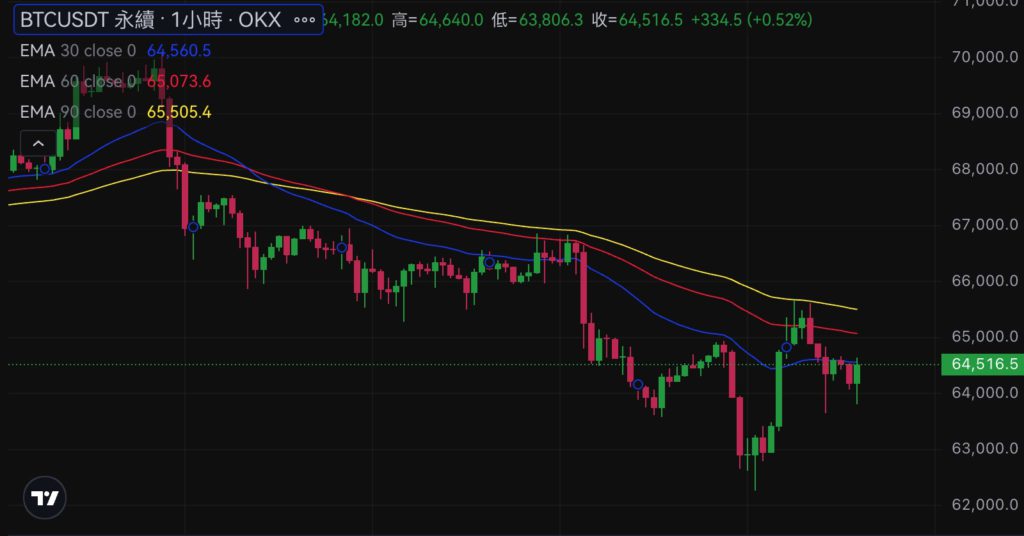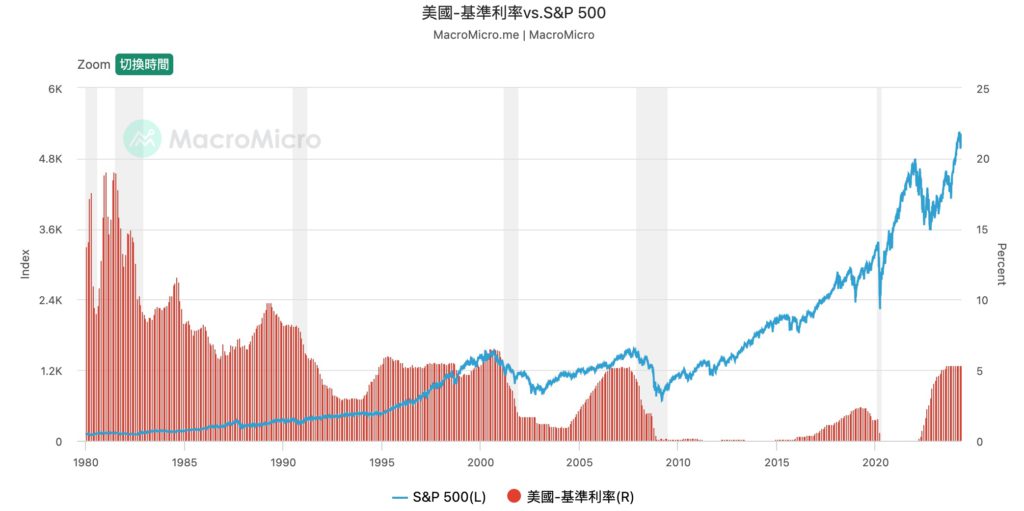After concluding its latest FOMC meeting yesterday (1), the Federal Reserve (Fed) kept the federal benchmark interest rate unchanged for the eighth time at a range of 5.25% to 5.5%, as expected by the market. Fed Chairman Jerome Powell was also at the press conference. Let’s relax, the market’s long-awaited interest rate cut is imminent.
UK interest rates cut for first time in four years
In addition, the Bank of England (BOE) also issued its latest interest rate decision later yesterday (1), announcing that it would cut the benchmark interest rate by one point, from 5.25% to 5%, which was the first interest rate cut since the outbreak of the new crown epidemic in 2020.
In this regard, Bank of England Governor Andrew Bailey said:
Inflationary pressures have eased enough that we have been able to cut interest rates.
But we need to make sure inflation stays low and be careful not to cut interest rates too quickly or too much.
Bitcoin once fell below $63,000
We know that after Bitcoin and Ethereum spot ETFs were approved by the US SEC for listing, and Bitcoin completed its fourth halving in history in April, interest rate cuts are considered to be another major positive factor stimulating the rise of the cryptocurrency market.
However, after the Federal Reserve relaxed its interest rate cut and the Bank of England officially started to cut interest rates, Bitcoin not only lacked upward momentum, but continued to fall after 21:00 last night, with the lowest reaching $62,280. The author has rebounded at the moment. Now it is trying to stay above US$64,000.

After rising the day before yesterday, U.S. stocks fell sharply last night. The semiconductor sector was particularly miserable, with Huida falling 7% and Arm falling 15%.
Will interest rates fall after the rate cut?
Many investors may be upset, why is the market not responding as expectations of interest rate cuts become more and more clear, but instead falling? The following section will sort out historical data to discuss with readers whether interest rate cuts can really stimulate the venture capital market every time?
S&P 500 vs. U.S. interest rates comparison chart
The chart below shows a comparison between the S&P 500 and US interest rates since 1980. Let’s count the changes in the stock market after the Federal Reserve cut interest rates for the first time.
decline:
- During the 2020 COVID-19 epidemic, the stock price fell sharply for a short time after the interest rate cut, but rebounded quickly.
- Interest rates cut before 2008 financial crisis, followed by stock market crash
- During the dot-com bubble in 2000, the SP500 index also fell in tandem with interest rates.
rise:
- In 1995, stocks rose after rate cuts
- In 1989, stocks rose slightly after a rate cut
Stopping the phase of raising interest rates has led to mostly gains.
It is worth noting that we can find that in each cycle, the S&P500 mostly rose when it stopped raising interest rates. In 1995 and 2006, it rose by nearly 20%. The high interest rates that will continue to be maintained after August 2022 are also Let U.S. stocks continue to hit new highs; when interest rates really start to be cut, a higher proportion will fall.
One possible reason is the psychology of anticipation: during the stage of stopping interest rate increases, the mentality of anticipating an interest rate cut comes into play in advance, just as the market has often announced that interest rates will be cut soon in the past year. Every time you will see Bauer constantly stating that economic data should prevail. As a result, once interest rates are actually cut, the market has already reacted in advance, and all the profits will be easily wiped out.
On the other hand, the Federal Reserve has initiated interest rate cuts many times because of more serious economic problems, forcing the Fed to cut costs. This is not good news for the investment market.

Returning to the current interest rate cut cycle, although the background of this interest rate cut is basically to return to normalcy, it cannot be ruled out that investors may sell assets due to the expectation of a potential "economic recession". Therefore, investors cannot simply follow the madness after the epidemic. market, it is believed that interest rate cuts will definitely stimulate the stock market (or risk market) to rise.
The market fluctuates greatly in the short term, but is bullish in the long term
Therefore, although in the long term, historical data shows that interest rate cuts are usually good for risk markets, the fermentation period may take several months to several years before the upward trend can emerge; short-term fluctuations are difficult to predict, and the market may not Instead, it will reverse and fall. Bitcoin's decline last night may also be the first to show fluctuations as a leading indicator, and it remains to be seen what the market outlook will be like.
At the same time, Dongzhong also reminds investors to do a good job in risk management and not to blindly believe that the market will go all the way up and invest funds with leverage just because the Federal Reserve really starts to raise interest rates.







